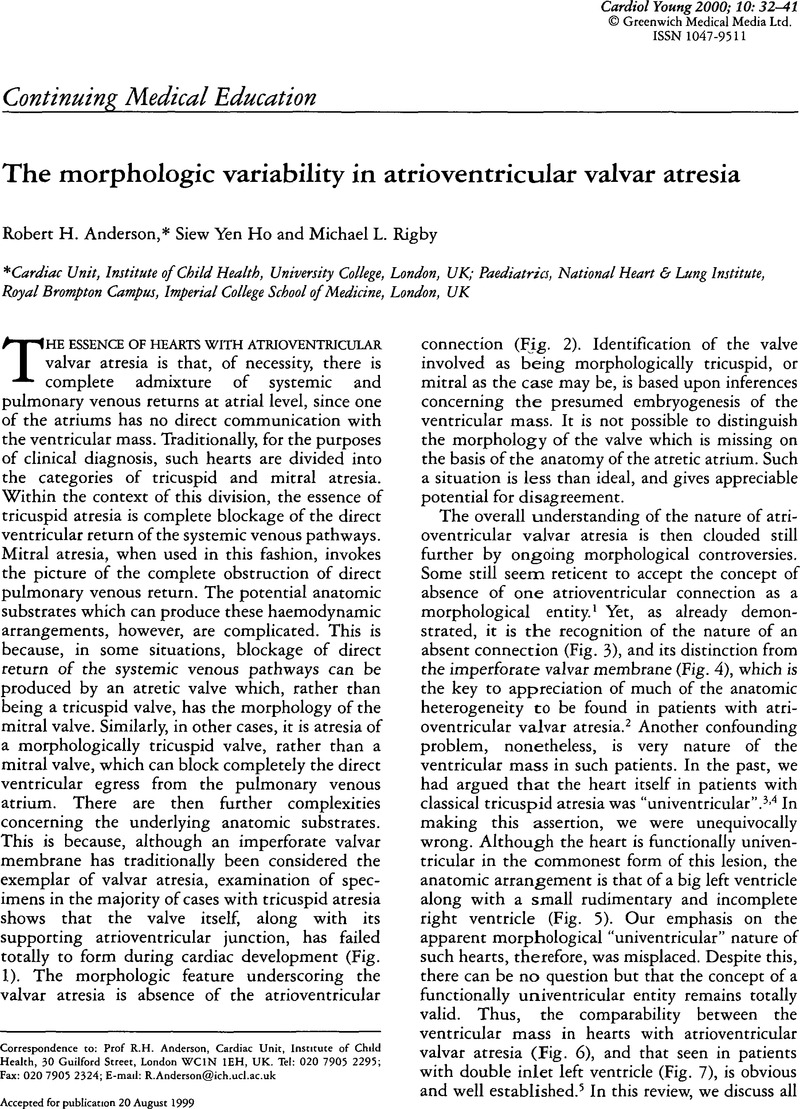Crossref Citations
This article has been cited by the following publications. This list is generated based on data provided by Crossref.
Anderson, Robert H.
Baker, Edward J.
and
Redington, Andrew N.
2000.
Can we describe structure as well as function when accounting for the arrangement of the ventricular mass?.
Cardiology in the Young,
Vol. 10,
Issue. 3,
p.
247.
Martinez, Richard M.
and
Anderson, Robert H.
2006.
Echo-morphological correlates in atrioventricular valvar atresia.
Cardiology in the Young,
Vol. 16,
Issue. S1,
p.
27.
Perloff, Joseph K.
and
Marelli, Ariane J.
2012.
Clinical Recognition of Congenital Heart Disease.
p.
439.
Faber, Jaeike W.
Buijtendijk, Marieke F. J.
Klarenberg, Hugo
Vink, Arja Suzanne
Coolen, Bram F.
Moorman, Antoon F. M.
Christoffels, Vincent M.
Clur, Sally-Ann
and
Jensen, Bjarke
2022.
Fetal Tricuspid Valve Agenesis/Atresia: Testing Predictions of the Embryonic Etiology.
Pediatric Cardiology,
Vol. 43,
Issue. 4,
p.
796.
Marelli, Ariane J.
and
Aboulhosn, Jamil A.
2023.
Perloff's Clinical Recognition of Congenital Heart Disease.
p.
404.



